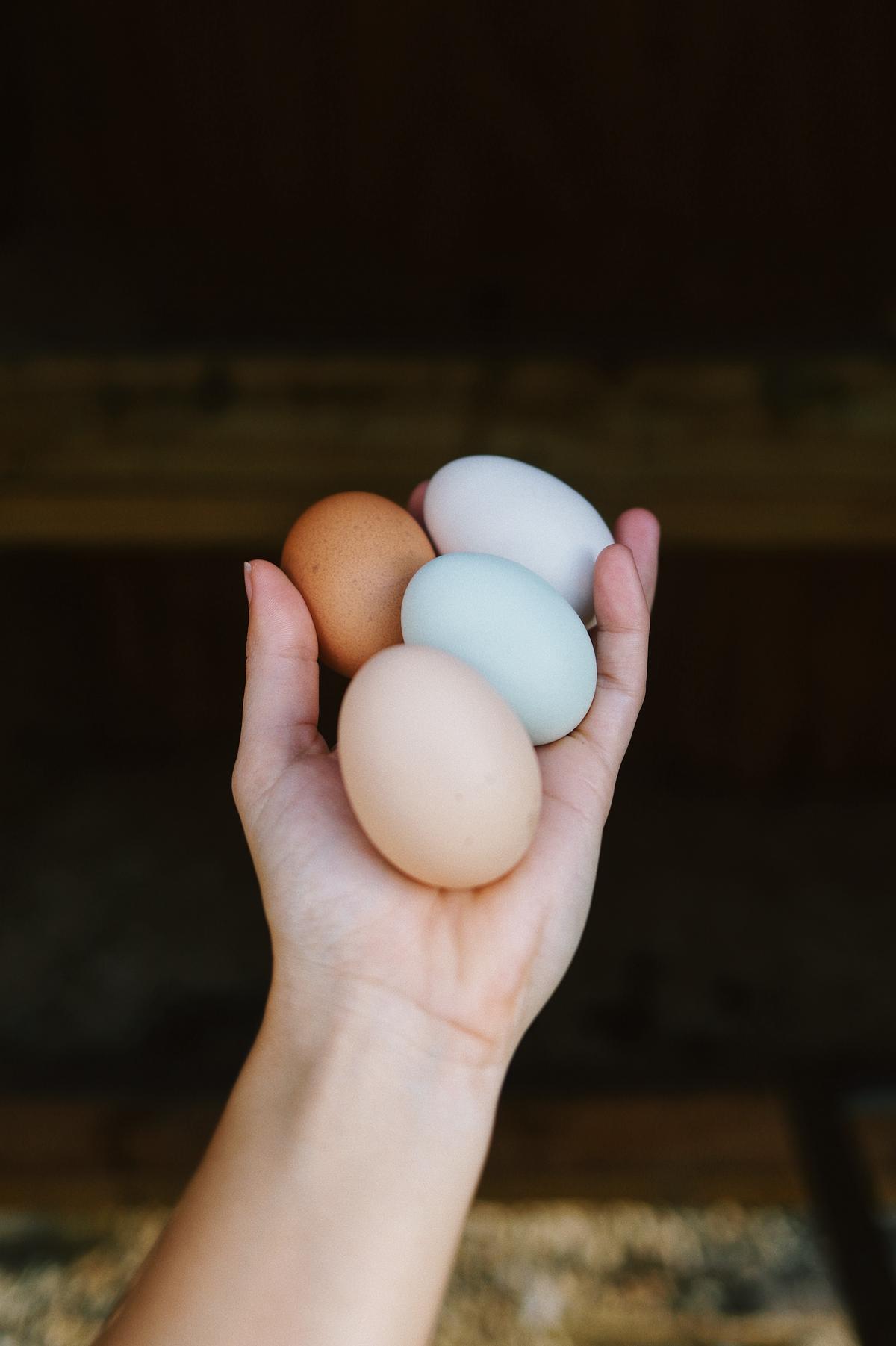Raising chickens for eggs may seem daunting for a beginner, but with a little knowledge and preparation, it can surprisingly turn into an enjoyable and fulfilling hobby. Keeping chickens offers numerous benefits ranging from a fresh supply of eggs and natural pest control to an opportunity for composting.
However, before you welcome your first flock of chickens, there are critical aspects to familiarize yourself with to create a healthy and productive environment for your new feathered friends. This includes understanding the chicken’s lifecycle, selecting an appropriate breed, and knowing how to create and maintain a safe, comfortable home for them.
We will receive a commission if you purchase through our affiliate link at no extra cost to you. Please read our disclosure policy for more information.
Understanding Chicken Lifecycles
Raising Chickens from Hatchlings
Raising chickens from hatchlings, or chicks, comes with its own unique requirements. At this stage, the chicks should be kept in a warm, draft-free brooder – a specially designed heated pen. The temperature within the brooder should initially be set at around 95 degrees Fahrenheit and gradually decreased by about 5 degrees each week. This helps them acclimatize to normal temperatures over time.
A chick’s diet is specific too. They need a high-protein feed, typically called “starter crumb,” which is specifically formulated for young chicks. Provide fresh water daily, ensuring all chicks can reach the drinker without difficulty. Chicks also require some grit sprinkled on their feed once they start eating treats to help them digest food effectively.
Here is a brooder box that has everything you need to keep your new chicks warm and safe.
Transitioning to the Adolescent Stage: The Grower Phase
As your chickens grow and reach about six to eight weeks, their need for intense heat will reduce. Once fully feathered, they can live comfortably at the same temperature as adult chickens, around 70 to 75 degrees Fahrenheit.
At this point, it’s time to shift their diet to a “grower feed.” It contains lesser protein than starter feed, yet provides the essential nutrients to support their rapid growth. Continue providing fresh water and grit to aid digestion.
Adolescent chickens also need more space. If kept in an enclosed area, provide around 4 square feet per chicken to allow them to move freely.
Becoming a Layer: The Adult Stage
Once the chickens reach about 16 to 20 weeks of age, they officially become layers, producing eggs regularly. At this stage, they should shift to a layer feed which contains higher amounts of calcium for strong egg shell production. Depending on the breed, most hens will start laying eggs at around 5-6 months of age.
Adult chickens will need an area of a minimum of 10 square feet per bird if they are free-ranging, and at least 2 square feet per bird in the coop for roosting and nesting. The henhouse should also have adequate nest boxes – a good rule is one nest box for every 3-4 hens.
Don’t forget fresh water – always keep it available. Also, make sure the chicken’s environment remains clean, hygienic, and pest-free to prevent diseases. The coop should also have good ventilation to keep dampness and bad odors at bay.
You can build your own nesting boxes, or purchase one from an online store, the one below comes with egg storage.
Healthcare for Chickens at All Stages
Chickens, regardless of their age, need regular health checks. Monitor your flock daily for any signs of illness, such as lethargy, loss of appetite, or changes in their egg production. Regularly deworm your chickens and protect them against lice and mites. Providing them with a safe and stress-free environment will also help keep your flock healthy and happy.
Remember, healthy chickens are productive chickens. Proper care at each life stage will ensure a constant supply of fresh eggs and the satisfaction of raising contented chickens.

Photo by amyjoyhumphries on Unsplash
Selecting Your Chickens
Choosing The Right Breed
When beginning your journey to raise chickens for eggs, one of the first steps is choosing the right breed. Different breeds of chickens have varied egg-laying abilities, temperaments, and hardiness, so it’s essential to choose ones that align with your needs. Breeds like the Rhode Island Red and Sussex are known for their excellent egg-laying abilities, making them a popular choice for those primarily interested in egg production. These breeds are also known for being hardy and easy to care for, making them suitable for beginners. to learn more about selecting the best chickens for laying egg check out my article: Beginners guide to chicken breeds- an informative overview
Understanding Temperament
Chicken breeds also vary greatly in temperament. Some are calm and friendly, while others are more independent and skittish. Understanding these differences can help you better manage your flock. For beginner chicken keepers, it’s often best to stick with breeds known for being friendly and easy to handle. The Australorp and Orpington breeds, for example, are renowned for their docile natures and can be a good fit for those who are new to poultry keeping.
Checking Hardiness
Hardiness is another important factor to consider when choosing a breed. Some chickens can withstand harsh climatic conditions better than others. If you live in an area with severe winters or hot summers, you will need to pick a breed that can comfortably live in such conditions. Breeds like the Brahma and Cochin are known for their ability to withstand cold temperatures, whereas breeds like the Leghorn and Ancona fare better in hot climates.
Sourcing Your Chickens
Once you have chosen the breed that suits your needs, the next step is to source your chickens. Most beginners start with either day-old chicks or point-of-lay pullets. Chicks are cheaper and give you the experience of raising your chickens from a very young age. In contrast, point-of-lay pullets are around 16-20 weeks old and will start laying eggs soon after being purchased.
There are various sources from which to acquire chicks or chickens. Local feed stores often sell day-old chicks in the spring, but the selection may be limited. Online hatcheries, on the other hand, offer a wider variety of breeds and deliver chicks through the mail. Another option is to purchase from local breeders or poultry farmers.
Remember, no matter where you source your chickens, it’s essential to ensure they’ve been vaccinated, well-cared for, and come from a clean and healthy environment.

Building and Maintaining a Chicken Coop
Creating a Safe and Comfortable Coop
Raising chickens begins with creating the correct environment for them. Space should be your first consideration when planning a coop. An overcrowded coop will lead to stressed, unhealthy chickens. As a rule of thumb, each chicken should have at least 4 square feet inside the chicken house and 10 square feet in the run. When it comes to chicken coops you have many options, you can purchase a chicken coop prebuilt, you can build your own from a set of plans. Interested interested in some FREE chicken coop plans Click Here. If you are a DIY and want to design your own coop, check out my article that list everything you should take into consideration. DIY Guide: Build your own chicken run.
Brace Against Predators
Protection from predators is vital. The run should be completely enclosed, including from the top, as many predators can climb or fly. It’s also good practice to use a secure latch system, as some raccoons and other animals have been known to open simple latches. Use strong chicken wire or hardware cloth to protect your chickens but allow them ventilation. I’ve had good luck with these (Redeo) solar-powered animal repellent, they are equipped with dual red LED lights. The dual strobe lights imitate the fire and eyes of large predators to warn intruders to stay away from the protected areas by flashing red lights. It will flash all night to protect you chicken coop. Learn more Click Here.
Allow for Proper Ventilation
Ventilation is crucial in a chicken coop to prevent moisture build-up that can lead to respiratory problems in chickens. Coops should have vents or windows high up to allow warm, humid air to escape. During colder weather, these can be partially covered to prevent drafts, but there should never be a complete absence of ventilation.
Maintenance and Cleanliness
Maintaining cleanliness within the coop is essential to prevent diseases. A regular cleaning routine should include removing droppings, replacing bedding, and disinfecting perches and nesting boxes. Paraffin oil can be used to prevent infestation by mites and lice on perches and in crevices.
Daily Chicken Chores
Daily chores are an essential part of chicken keeping. Chickens should have access to fresh food and clean water at all times. Feeders and waterers should be hung at the height of the chicken’s back to prevent them from fouling with bedding or droppings. Food and water containers should be cleaned regularly.http://<a target=”_blank” href=”https://www.omlet.us/shop/chicken_keeping/feeders_and_drinkers/?aid=HHFFVCYR”>Link</a
Observing chickens frequently aids in quickly identifying any problems. Chickens should be checked for parasites, wounds, or signs of illness. Changes in the appearance of their droppings, their level of activity, or egg production are indicators that can help determine the birds’ health.
With careful planning, raising chickens for eggs can be a rewarding pursuit.
Protecting from predators, ensuring sufficient space and ventilation, practicing cleanliness, and performing daily chores are key aspects to keep in mind as a beginner chicken keeper.

With all said, becoming a successful chicken keeper is not overly complicated once there is an understanding and implementation of the chicken’s needs at different life stages, making a wise choice on the breed, and building and maintaining a conducive coop for them. There is indeed an undeniable learning curve involved, but the reward of gathering fresh, tasty eggs from your backyard flock can make it all worthwhile. Once you get used to the routine, you’ll wonder how you ever lived without these quirky, productive creatures as part of your homestead. So, roll up your sleeves, prepare, and kickstart your egg-laying chicken raising adventure!
Check out 10 tools every chicken keeper should have! Read More









